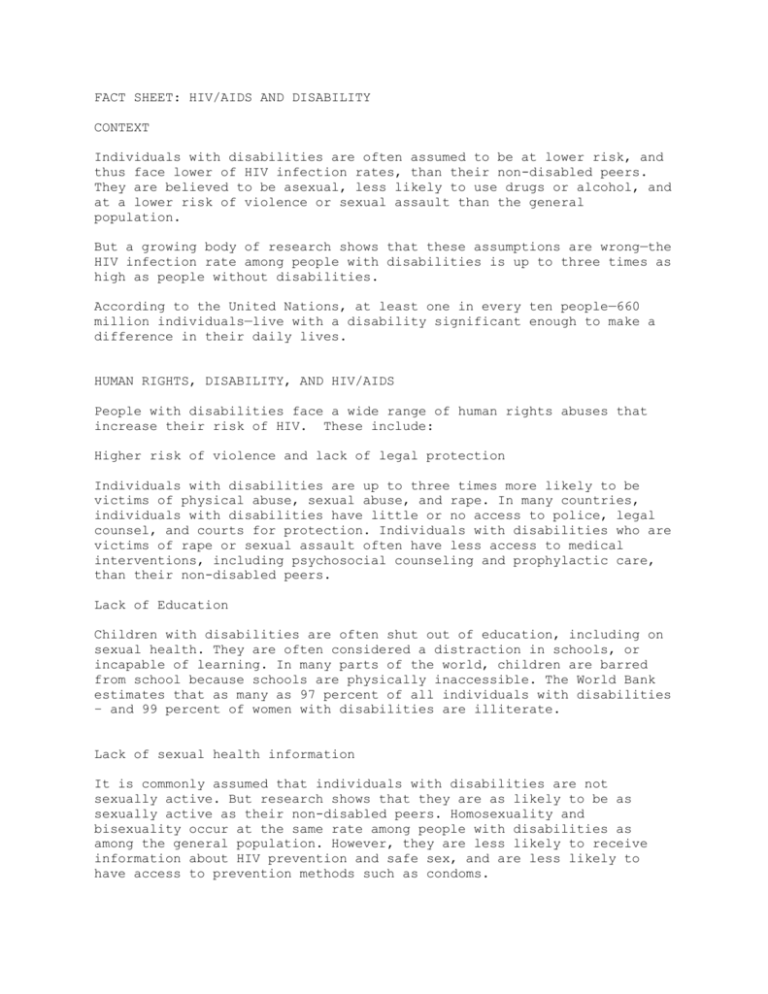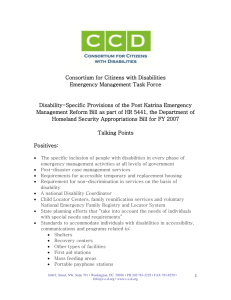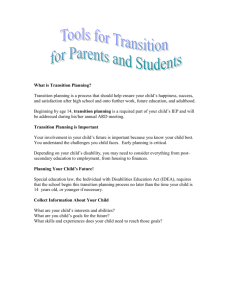
FACT SHEET: HIV/AIDS AND DISABILITY
CONTEXT
Individuals with disabilities are often assumed to be at lower risk, and
thus face lower of HIV infection rates, than their non-disabled peers.
They are believed to be asexual, less likely to use drugs or alcohol, and
at a lower risk of violence or sexual assault than the general
population.
But a growing body of research shows that these assumptions are wrong—the
HIV infection rate among people with disabilities is up to three times as
high as people without disabilities.
According to the United Nations, at least one in every ten people—660
million individuals—live with a disability significant enough to make a
difference in their daily lives.
HUMAN RIGHTS, DISABILITY, AND HIV/AIDS
People with disabilities face a wide range of human rights abuses that
increase their risk of HIV. These include:
Higher risk of violence and lack of legal protection
Individuals with disabilities are up to three times more likely to be
victims of physical abuse, sexual abuse, and rape. In many countries,
individuals with disabilities have little or no access to police, legal
counsel, and courts for protection. Individuals with disabilities who are
victims of rape or sexual assault often have less access to medical
interventions, including psychosocial counseling and prophylactic care,
than their non-disabled peers.
Lack of Education
Children with disabilities are often shut out of education, including on
sexual health. They are often considered a distraction in schools, or
incapable of learning. In many parts of the world, children are barred
from school because schools are physically inaccessible. The World Bank
estimates that as many as 97 percent of all individuals with disabilities
– and 99 percent of women with disabilities are illiterate.
Lack of sexual health information
It is commonly assumed that individuals with disabilities are not
sexually active. But research shows that they are as likely to be as
sexually active as their non-disabled peers. Homosexuality and
bisexuality occur at the same rate among people with disabilities as
among the general population. However, they are less likely to receive
information about HIV prevention and safe sex, and are less likely to
have access to prevention methods such as condoms.
PROTECTION UNDER INTERNATIONAL LAW
Convention on the Rights of Persons with Disabilities (CRPD)
* Persons with disabilities enjoy all human rights and fundamental
freedoms on an equal basis with others (Article 5).
* Persons with disabilities have the right to be actively involved in
planning and carrying out HIV policies and programs, especially those
directly impacting them (Article 4).
* Governments must protect a broad range of rights including the right to
education, information and communication, as well as the right to
individual autonomy and independence (Articles 3, 16, 19, 21, 22, 24).
* Governments must provide persons with disabilities with the same
quality and standard of health care and programs as provided to other
people, including in the area of sexual and reproductive health and
population-based programs (Article 25).
* Governments must also enable persons with disabilities to attain and
maintain their maximum independence, full physical, mental, social and
vocational ability, and full inclusion and participation in all aspects
of life (Article 26).
International Covenant on Economic, Social and Cultural Rights (ICESCR)
* All persons, including persons with disabilities, have the rights to
work, to social security, to family life, to an adequate standard of
living, and to education (Articles 6, 7, 9, 10, 11, 13).
* Governments must protect the right of everyone to the enjoyment of the
highest attainable standard of physical and mental health (Article 12).
* Governments must guarantee that the rights in the ICESCR will be
exercised without discrimination of any kind as to birth or other status,
such as disability (Article 2).
International Covenant on Civil and Political Rights (ICCPR)
* All persons are equal before the law and are entitled without any
discrimination to the equal protection of the law. The law shall prohibit
any discrimination and guarantee to all persons equal and effective
protection against discrimination on any ground (Article 26).
* Governments must protect the rights to life, physical integrity, to
individual liberty and security, to privacy and to procedural fairness in
law (Articles 6, 7, 9, 10, 14, 16, 17).
* Governments must guarantee that the rights in the ICCPR will be
exercised without discrimination of any kind as to birth or other status,
such as disability (Article 2).
Convention on the Rights of the Child (CRC)
* Governments have an obligation to protect the human rights of all
children, including children with disabilities. The rights set out in the
CRC must be applied without discrimination based on disability (Article
2).
* Assistance to the child and those responsible for his or her care
“shall be designed to ensure that the disabled child has effective access
to and receives education, training, health care services, rehabilitation
services, preparation for employment and recreation opportunities in a
manner conducive to the child's achieving the fullest possible social
integration and individual development" (Article 23).
WHAT YOU CAN DO
* Reach out to persons with disabilities and disabled peoples
organizations to learn more about the specific needs of persons with
disabilities in your community.
* Ensure HIV services, including testing centers, care services, and
teaching and training sessions are fully accessible to persons with
different types of disabilities. This includes providing sign language
interpretation, easy-to-understand information materials, Braille
resources and ensuring that the services are physically accessible.
* Provide information in formats tailored to people with different
disabilities.
* Train staff of HIV organizations on disability issues and the
disability community on HIV issues. Train persons with disabilities and
especially HIV-positive persons with disabilities as peer support workers
in HIV programs.
* Promote and fund research on HIV and disability, ensuring that persons
with disabilities are included in the team designing, implementing and
analyzing the research.
* Encourage governments to ratify and incorporate into national law
instruments that protect the human rights of persons with disabilities,
including the CRPD.
* Advocate for persons with disabilities to have full sexual and
reproductive rights, access to harm reduction services, and to be free
from physical and sexual abuse.
FOR MORE INFORMATION:
AIDS-Free World: Disability & HIV/AIDS, www.aidsfreeworld.org/content/blogcategory/35/66/
AIDSLEX, http://www.aidslex.org/english/Topics/Topic-Details/?rid=26
Health Canada,
http://data.unaids.org/pub/Report/2009/20091111_hiv_and_disability_en.pdf
Human Rights Watch: Disability Rights, http://www.hrw.org/en/disabilityrights
Human Rights Watch, “As if We Weren’t Human: Discrimination and Violence
against Women with Disabilities in Northern Uganda,”
http://www.hrw.org/en/reports/2010/08/24/if-we-weren-t-human
World Bank,
http://siteresources.worldbank.org/DISABILITY/Resources/Health-andWellness/HIVAIDS.pdf
Yale University and World Bank Survey on HIV/AIDS and Disability,
http://cira.med.yale.edu/globalsurvey/
QUOTATIONS:
“If you have a wheelchair and you go to an AIDS service organization and
the first thing you see are all these flight of stairs, you are
immediately discouraged. Secondly, HIV testing and counseling services
are supposed to be confidential. But if you’re deaf and you go into this
service, you have to go with someone who can interpret for you, which
takes away the confidentiality part. So in the end, people don’t turn
up.”
Winstone Zulu, HIV/AIDS and tuberculosis activist, Zambia
“[My second child’s father] would just come at night, have sex, and leave
in the morning. He lives around here, but has deserted me. When I went
for antenatal care, then I came to know that I was HIV-positive. My
older daughter takes me to the hospital to get [anti-retroviral drugs].”
Edna, a woman who is blind and hearing-impaired, northern Uganda









